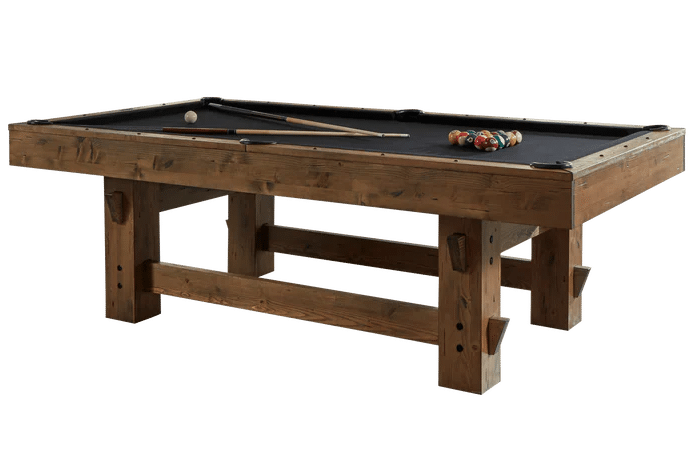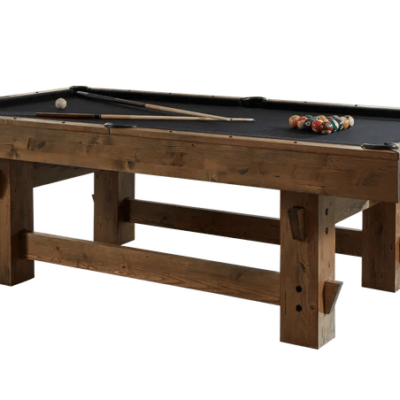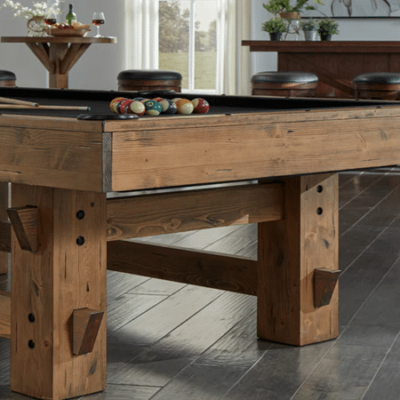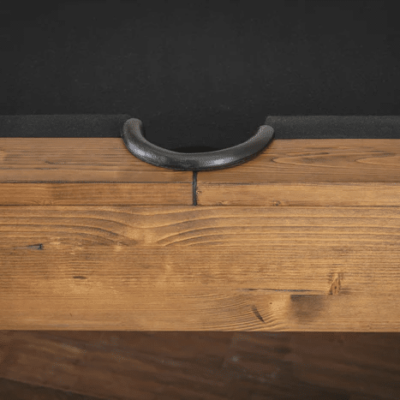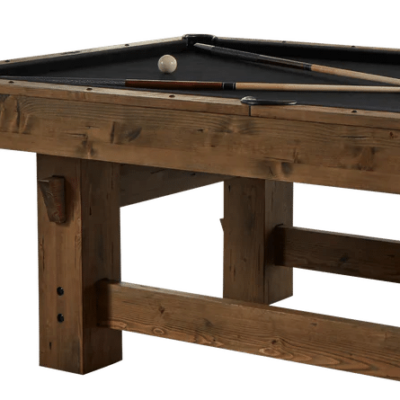Pool Table Internal Moving (After Water Damage, Flooding, Fire and Remediation)
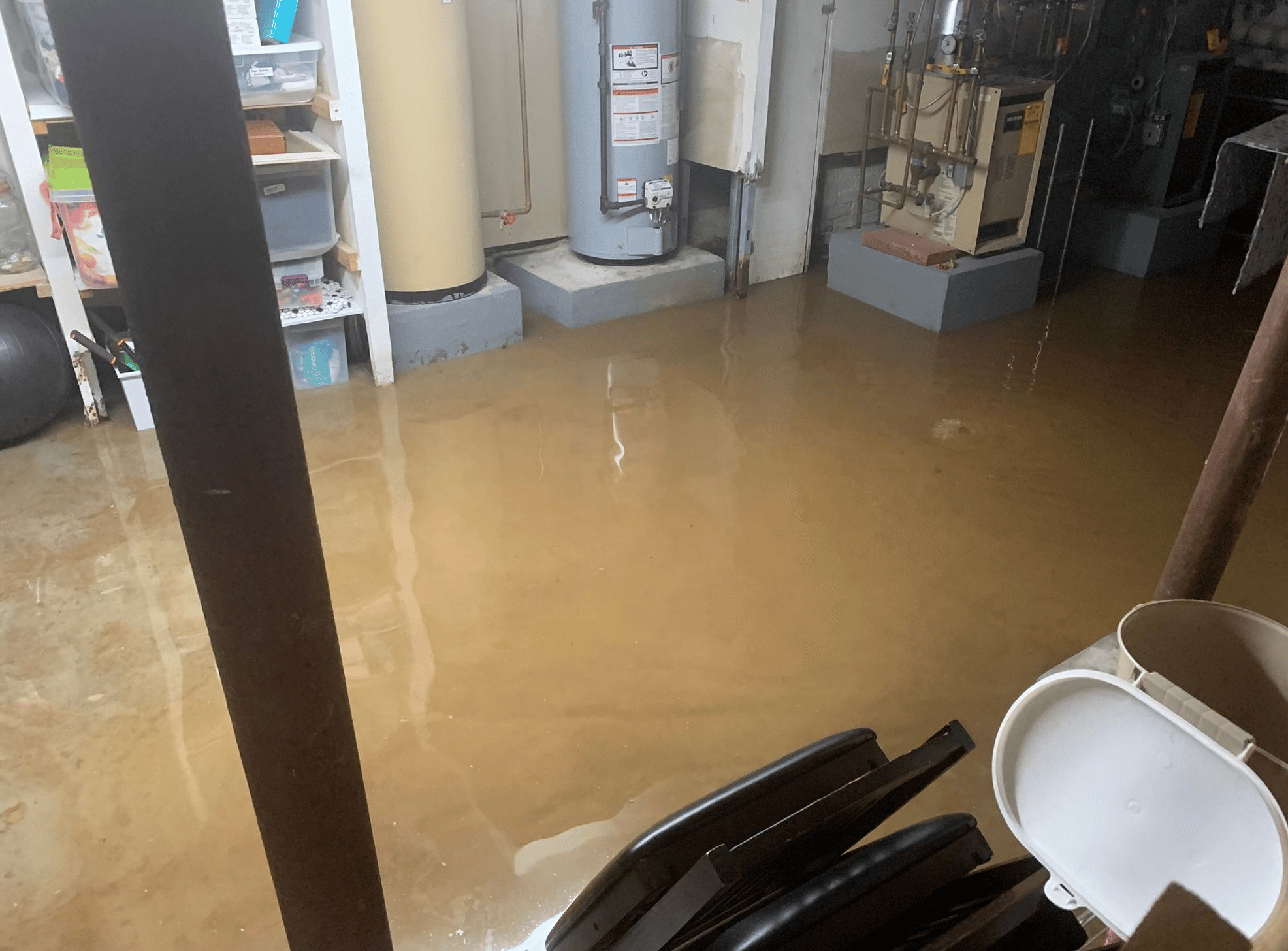
credit: Bklyner.com
Moving a pool table after water damage or flooding can be a challenging task, as the table and its components are sensitive to moisture and can be easily damaged. Here are some of the challenges you may face.
Disassembly:
Before moving the table, it will need to be disassembled, which can be a time-consuming and difficult task. The table must be taken apart carefully to avoid damaging any of the pieces, such as the legs, rails, and felt. In addition, all the parts should be thoroughly cleaned and dried to prevent mold or mildew from forming.
Disassembling a pool table is a complex process that requires a high level of expertise and care. The first step is to remove the felt or cloth from the playing surface, which is typically attached to the table with a staple gun. It is important to take care when removing the felt, as it is delicate and can easily be torn or damaged.
Once the felt has been removed, the rails, or the cushions that run along the edges of the table, can be removed. The rails are typically secured to the table with a series of bolts, screws, or dowels, which must be carefully removed without damaging the wood.
After the rails have been removed, the legs can be detached from the playing surface. The legs are typically attached to the table with a series of bolts or dowels, and must be removed carefully to avoid damaging the wood. Some pool tables have a center support beam that needs to be removed as well.
The last component to be disassembled is the slate. The slate is the heavy, flat piece of stone or slate that forms the playing surface of the pool table. The slate is typically secured to the table with a series of bolts or dowels, and can be quite heavy, so it requires a few people to help move it. Once the slate has been removed, the table will be disassembled.
It’s important to make sure that all the bolts, screws and hardware are stored in a labeled and organized manner, to make sure they can be easily located when it’s time to reassemble the table.
Tip: Take pictures of the process rather than relying on memory
Disassembling a pool table is a time-consuming and complex task that requires a high level of expertise and care, it’s recommendable to hire professional pool table movers to ensure that the process is done safely and efficiently.
Assembly and Re-leveling:
Once the table is disassembled and cleaned, it will need to be reassembled and leveled. This process can be difficult, as it requires a high level of precision to ensure the table is assembled correctly and is level on all sides. If the table is not assembled and leveled correctly, it may not function properly and may even be unsafe to play on.
Setting the frame: The first step in assembling a pool table is to set up the frame, which includes the legs, center support beams (if any) and the inner and outer beams that hold the playing surface. These components need to be attached together using bolts, screws, or dowels and level them to ensure the table is stable.
Installing the slate: The next step is to install the slate, which is the heavy, flat piece of stone or slate that forms the playing surface of the pool table. The slate is typically secured to the table with a series of bolts or dowels, and can be quite heavy, so it requires a few people to help move it. Once the slate is in place, it should be leveled to ensure it is perfectly flat.
Attaching the rails: After the slate has been installed, the rails, or the cushions that run along the edges of the table, can be attached. The rails are typically secured to the table with a series of bolts, screws, or dowels, and should be attached with precision to ensure they are level with the playing surface.
Installing the felt: The final step is to install the felt or cloth on the playing surface of the pool table. This is typically done by attaching the felt to the table using a staple gun. It is important to take care when installing the felt, as it is delicate and can easily be torn or damaged. The felt should be stretched tight and without wrinkles to make sure the ball will roll correctly.
Fine tuning: After the table has been assembled, it will need to be fine-tuned to ensure it is level, the pockets are properly aligned and the ball returns correctly. This process may require some adjustments to the leveling of the legs, the alignment of the pockets or adjusting the tension on the felt.
It’s important to note that the assembly process of a pool table is not only time-consuming but also requires high level of expertise and care, for that reason it’s recommended to hire professional pool table movers to handle the assembly. They will be able to ensure that the table is assembled correctly and will play perfectly after it’s reassembled.
Moving the billiard table within the house:
After the table is assembled and leveled, it will need to be moved to its new location within the house. This can be a difficult task as pool tables are heavy and bulky, which can make them hard to maneuver. Additionally, the table must be moved without causing any damage to the floors, walls, or other furniture.
Moving a pool table within a house can be a challenging task due to the table’s weight and size. Here are some of the steps involved in the process:
Planning and preparation: Before moving the table, it’s important to plan the route and measure the space to ensure that the table will fit through all doorways, hallways, and staircases. Also, it’s crucial to have enough people to help move the table, as it can be heavy and difficult to maneuver.
Disassembling the table: The table will need to be disassembled to a certain degree before it can be moved. This might involve taking off legs, the rails and the slate. The disassembling process should be done carefully and with great attention, to avoid damaging the table or any other parts.
Padding and wrapping: Once the table is disassembled, it should be padded and wrapped properly to prevent any damage while in transit. This may include covering the playing surface and legs with protective blankets, and also use shrink wrap to keep all parts together.
It’s important to note that moving a pool table is not an easy task and requires a significant amount of time and expertise. It’s recommended to hire a professional pool table mover to handle the moving process, as they have the knowledge and equipment to move the table safely and efficiently. The professionals will take care of disassembling, moving, reassembling, and leveling the table to ensure that it is safe to play on once it is in its new location.
Determining the extent of water damage and possible repairs:
Depending on the extent of water damage, there may need to be additional repairs performed before or after the move such as replacing the felt, cushions or other damaged parts. These repairs can add extra cost and time to the moving process and need to be taken into account. Here are some of the steps involved in assessing the damage and determining the necessary repairs:
Inspection: The first step in determining the extent of water damage is to thoroughly inspect the table and all of its components, including the frame, legs, rails, slate, and felt. Look for any signs of water damage, such as warping, stains, or mildew.
Testing the components: Once the initial inspection is done, the next step is to test the different components of the table to see if they are still functional. This may include testing the pockets for alignment, the ball returns for proper function and the level of the slate.
Identifying the repairs: Based on the results of the inspection and testing, it’s possible to identify the repairs that need to be made. This may include replacing the felt, cushions or other damaged parts, leveling the slate, re-aligning pockets and ball returns, etc.
Assessing the cost: Once the necessary repairs have been identified, it’s important to assess the cost of making those repairs. This will include the cost of any replacement parts and the labor required to make the repairs.
Prioritizing the repairs: Depending on the extent of the damage and the cost of the repairs, it might be necessary to prioritize the repairs to be done. For example, if the table is structurally unsound or the slate is severely damaged, those repairs should be done first.
It’s worth noting that in some cases, the water damage may be extensive and the repairs may be costly, it could be that the cost of repairs exceeds the value of the table. In that case, it may be more cost-effective to purchase a new or used table rather than repairing the existing one. A professional pool table mover will have the expertise to assess the damage and advise on the best course of action for the table.
Summary:
In short, moving a pool table after water damage or flooding is a complex task that requires a significant amount of time and expertise. It’s recommended to hire a professional pool table mover to handle the disassembly, assembly, re-leveling, and moving of the table, as they have the knowledge and equipment to do so safely and efficiently.
You want your pool table moved cheap?
This is a great article written by our friend, Jeff Black, founder of the American Billiard Installers Association.
The comic relief is enough to make it worth a read, but the message is clear and couldn’t be any more true!
http://www.moveapooltable.com/you-want-your-pool-table-moved-cheap/
How do I properly store my pool table?
During our routine day to day business dealings, we come across many different tables and many different situations. Throughout our days we see a lot of things that people do with their table that makes us simply cringe. While we can’t expect you to automatically know what to do with your table when we’re not there to advise you, we can educate everyone as much as possible, here and at your appointment, as to what NOT to do with your table to ensure its future value and longevity. One of the main keys in ensuring a table lasts as long as the manufacture intended, is the proper storage of the table when it’s setup and not in use, or not set up at all in storage.
Far too many times we’ve seen ads with tables for sale with the table described as “Beautiful! Perfect condition! Not a mark on it! Ready to be loaded onto your pickup!”
Sounds great! Right?
Well, let’s see… take a look at the pictures and what do you see? The table is completely assembled, minus the legs, and it’s leaning on its side up against the wall. (Cringe!!!)
A slate pool table can weigh anywhere from 500-1200 pounds. The weight of a pool table can be devastating to the construction and attachment of the rails. The rails are usually the most decorative and the first seen part of the pool table. Once they’re damaged or broken, the table has lost a lot of its value. The rails are replaceable, but the price is usually extremely high and matching the original color of the frame is not always possible due to age/fading.
A table stored on its side is also much harder and more dangerous for us to disassemble and move. The frame is not meant to be moved in one piece because there is nowhere to grab the table and lift while the rails are attached.
Once the rails and the slate have been removed from the frame, the frame can be stored on its side. The rails should have the pockets removed. The rails should be positioned so that the cushions(cushions) are not being pressed on by anything surrounding them, as this can cause permanent dents in the rubber over time. The pockets would ideally be stored in a box individually wrapped, or they can be stored lying flat so that the fringe or the shields aren’t wrinkled or bent.
The slate should be stored vertically on its side and against a wall. This is the part that must be done properly in order to not cause any damage to your home or storage area. The floor would ideally be concrete or hardwood with a moving blanket in between the slate and the floor. The weight of the slate can put permanent impressions in your carpet. There also needs to be another moving blanket between the slate and the wall, as it can leave impressions in your wall as well.
It would be advisable to not store any portion of the table in an area that can be easily affected by moisture. All of the hardware for the table should be placed in a plastic/paper bag and either stapled to the inside of the frame, or in the box with the pockets for safe keeping.
Why should I hire a Pool Table Mover instead of a Mover that specializes in heavy things?
Unless you’ve hired a Pool Table Mover in the past, the majority of the public does not know that there’s such a thing as a Pool Table Moving Company. A pool table is more than just a heavy piece of furniture. It takes years of experience to properly breakdown, move, and install a pool table.
The most important part of retaining the value of your pool table is not only the original installation of the table, but the proper breakdown, move, and reassembly of your table.
Each individual pocket and rail must be removed and properly labeled. The labels ensure the rails and pockets go back onto the table exactly as they were installed.
Once the rails are removed, there should be about 500 staples that have to be individually and carefully removed to take the felt off the table. The slate screws are then removed, detaching the slate from the frame. Typically the slate will be in three pieces, sealed together at its seams with beeswax.
With the slate removed, the legs can now be taken off (and labeled) or left on, depending on your storage/moving space needs. The frame will almost always be left in one piece, as perfectly lined reassembly of the frame is almost impossible.
If you are moving a long distance, it would be ideal for the Moving Company that is moving the rest of your home to also move your pool table in its newly disassembled state. Any Professional Moving Companies that we have worked with have always required that the slate is crated. Slate may be extremely heavy, but it is also extremely fragile. Most movers will not take on the liability of moving anything this fragile in an unprotected state.
To ensure safety of the slate and the movers, we will build individual custom crates around each piece of your pool table slate. This way it can be easily and safely transported by your movers to your new location. We’ve been in this business for 12 years, and we have never witnessed any damage to slate that has been properly crated, no matter how far the move. The construction of the crates should also be in a manner that they can be kept and reused in future moves.
At this point the entire table is ready for moving. A Professional Moving Company can now wrap your table as they would any other item in your home.
If you are not moving a long distance, such as out of state, we will gladly move your table in our enclosed box trailer. The slate will not have to be crated. Our trailer is custom crafted to safely transport every part of your pool table as well as your accessories.
When your table reaches its new location, it can now be easily stored or immediately reassembled. Reassembly by the original pool table movers, or by a different pool table mover, should now be easily accomplished thanks to the proper markings during the previous breakdown.
In the end, pool is a game of precision. Playing on a table that is not properly installed, broken down, moved, and reassembled with extremely precise leveling can be very frustrating for the player.

